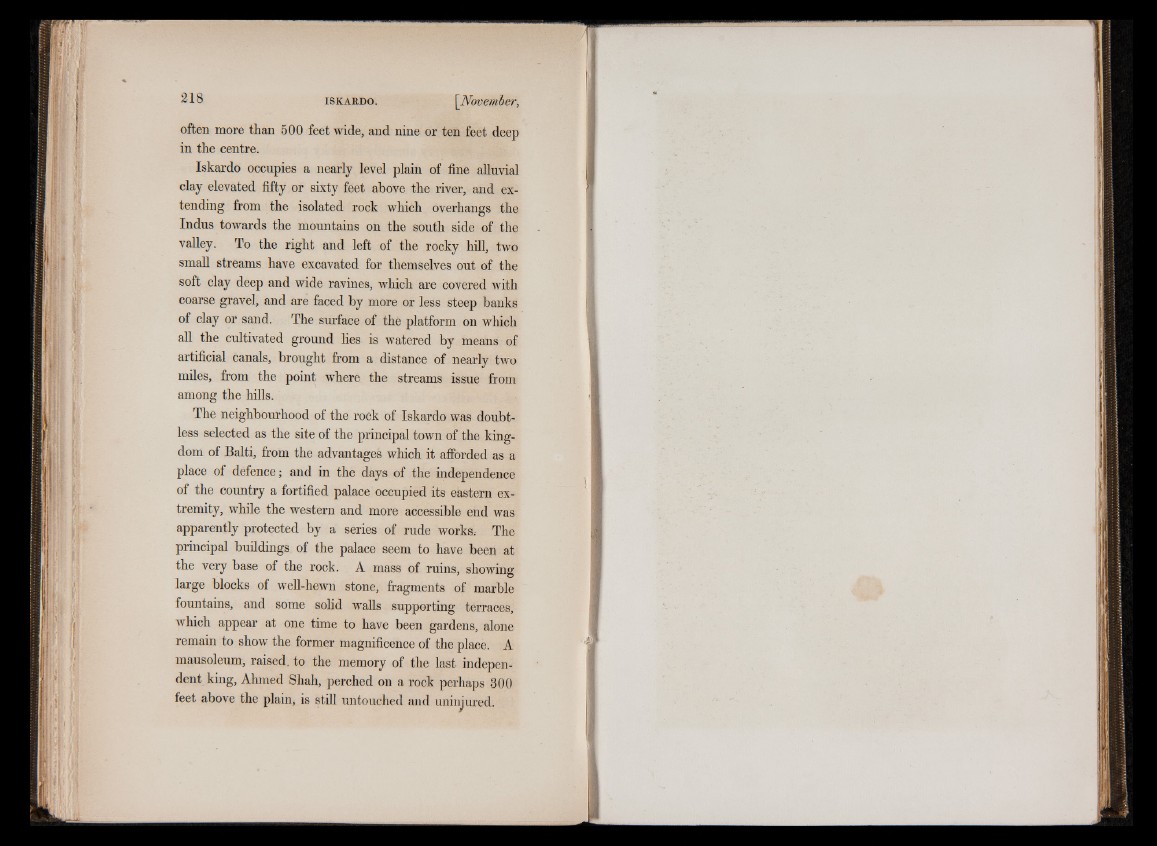
often more than 500 feet wide, and nine or ten feet deep
in the centre.
Iskardo occupies a nearly level plain of fine alluvial
clay elevated fifty or sixty feet above the river, and extending
from the isolated rock which overhangs the
Indus towards the mountains on the south side of the
valley. To the right and left of the rocky hill, two
small streams have excavated for themselves out of the
soft clay deep and wide ravines, which are covered with
coarse gravel, and are faced by more or less steep banks
of clay or sand. The surface of the platform on which
all the cultivated ground lies is watered by means of
artificial canals, brought from a distance of nearly two
miles, from the point where the streams issue from
among the hills.
The neighbourhood of the rock of Iskardo was doubtless
selected as the site of the principal town of the kingdom
of Balti, from the advantages which it afforded as a
place of defence; and in the days of the independence
of the country a fortified palace occupied its eastern extremity,
while the western and more accessible end was
apparently protected by a series of rude works. The
principal buildings of the palace seem to have been at
the very base of the rock. A mass of ruins, showing
large blocks of well-hewn stone, fragments of marble
fountains, and some solid walls supporting terraces,
which appear at one time to have been gardens, alone
remain to show the former magnificence of the place. A
mausoleum, raised, to the memory of the last independent
king, Ahmed Shah, perched on a rock perhaps 300
feet above the plain, is still untouched and uninjured.